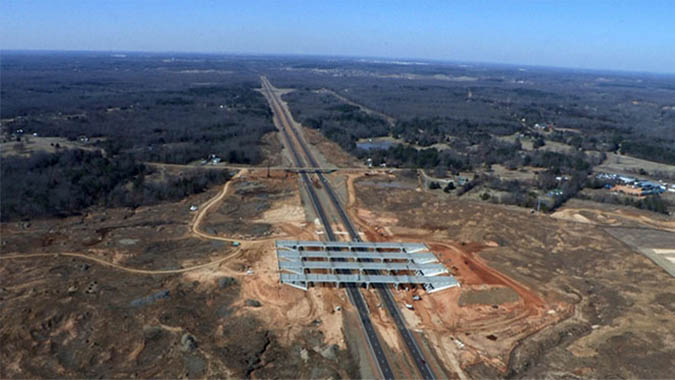
photo credit: Mississippi Department of Transportation
| Location | DeSoto and Marshall Counties, Mississippi (Memphis, Tennessee Metropolitan Region) |
|---|---|
| Project Sponsor / Borrower | Mississippi Department of Transportation |
| Program Areas |
|
| Mode | Highway |
| Description | I-269 in DeSoto and Marshall Counties, Mississippi is the 25-mile, Mississippi portion of a partial circumferential highway around the Memphis, Tennessee metropolitan region. It is part of the federally mandated I-69 ultimately connecting Mexico and Canada. The project consists of the upgrade/construction of a four-lane Interstate between the I-55/I-69 junction in Hernando to US 78 at the DeSoto/Marshall County Line west of Byhalia, and from there, through Marshall County, northeast to SR 302 and north to the Tennessee State Line at the intersection of US 51 and SR 385 in Millington, Tennessee. The I-269 loop is intended to relieve traffic on the I-55/I-69 north-south corridor through Memphis and help spur economic growth and access among growing communities in Northern Mississippi. |
| Cost | $663.5 million (December 2013 Financial Plan Update)
|
| Funding Sources | Special Obligation Bonds (Highway Enhancement through Local Partnership [HELP]) - $601.4 million; issued by local entities and akin GARVEEs; includes:
SAFETEA-LU Earmarks - $53.2 million |
| Project Delivery / Contract Method | Design-bid-build / Design-build |
| Private Partner | None |
| Project Advisors / Consultants | Not available |
| Lenders | Bondholders |
| Duration / Status | Construction began in 2011. The portion of the project from SR 302 to the Tennessee State Line opened in October 2015. The remainder of the project is expected to by late 2018. |
| Financial Status / Financial Performance | Closed |
| Innovations |
|
| Related Links / Articles | Memphis Urban Area MPO I-269 Tennessee Regional Vision Study |
| Contacts | Not available |